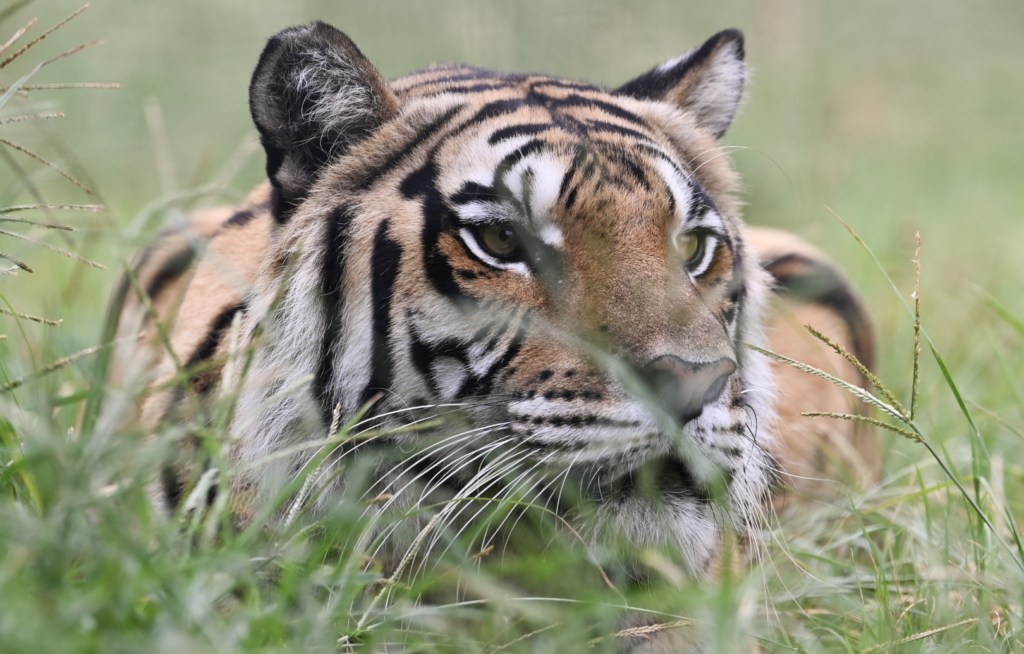
This week’s Cat of the Week (4/21/24 – 4/28/24) is Shasta Tigress, and we discuss how she is distinguishable from other tigers at the Refuge by her exceptionally long whiskers. But what is the purpose of whiskers among felines? In today’s blog, we will explore this topic further.
Whiskers are known as vibrissae, long stiff hairs growing around the face of many mammals, used as organs of touch. These vibrissal hairs are thicker and stiffer than other hair types; they grow from a special hair follicle called a blood sinus that is heavily connected to sensory nerves. They can be located in serval areas of the face, including the eyes, chin, snout, and cheeks. The function of whiskers differs for each animal depending on their ecosystem, and marine mammals also have them.
In felines, the primary purpose of whiskers is to help them navigate through low-light conditions or environments with low visibility. This includes their nighttime travel and stalking through thick brush. The whiskers are highly sensitive to the slightest touch or movement, which can detect subtle changes in airflow and physical objects in their environment. This adds the advantage of a secondary sensory perception, allowing them to judge their spatial surroundings and evade obstacles when traveling at high speeds.
Whiskers also play an important role in cats’ communication. When a cat is emotional, feeling threatened, or defensive, their whiskers will flatten against their face. When cats are more content and relaxed, their whiskers will flare outwards.
In summary, whiskers are a physical adaptation and advantage to animals that rely on hunting to survive. Since most cats are either nocturnal or crepuscular, having this additional sensory mechanism helps them be more successful at surviving with less light.

